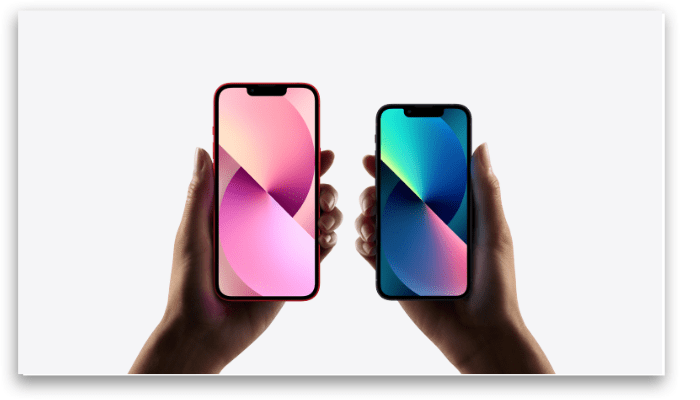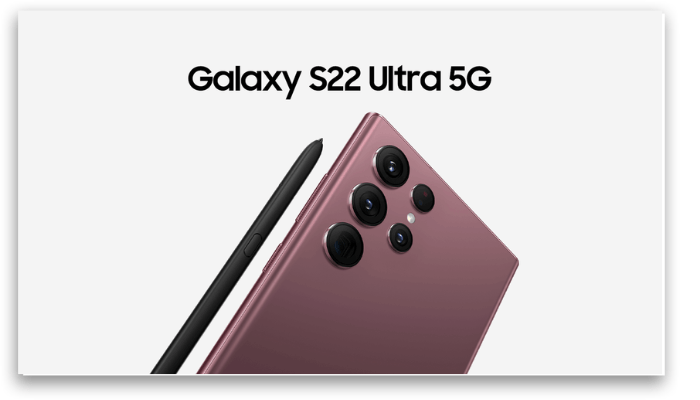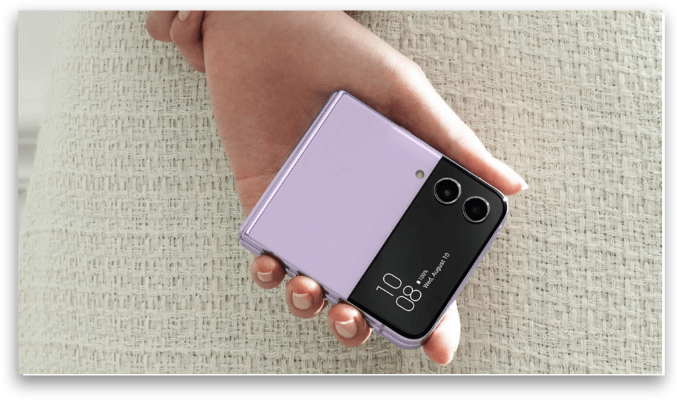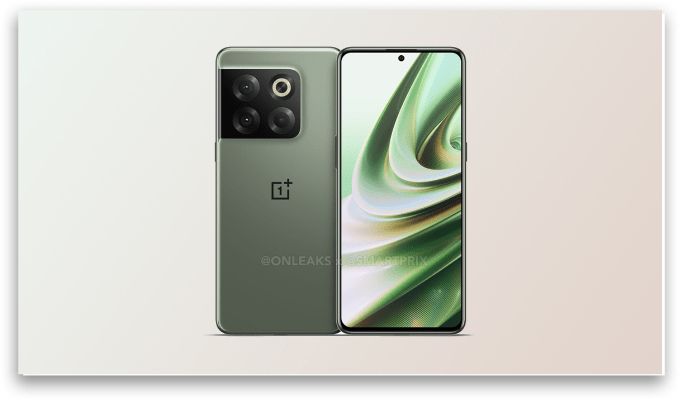The best phones to buy in 2022: a comprehensive list!
With so many new releases through the months, it can be quite hard to know which phones are worth it, and even which ones are the best to buy. Even so, it’s not really hard to find lists talking about which devices offer the most advantages and good cost-benefit to consumers.
When we think about buying great phones, our minds typically go to the newest and flashiest models around, and we tend to forget about the good options that were released last year or the year before that.
Thinking about that, we have selected some of the best phones available right now and listed them down below. This way, you can check out what they’re all about and decide which one fits best to your needs. Check them out down below!
iPhone 14 Pro and Pro Max
The iPhone 14 Pro brings some new features, making it a special for early adopter of sorts. If it’s time to update your phone and you want all the latest and greatest features, then you’ll need to go Pro.
Without a doubt, it is one of the best cell phones in the world.
The iPhone 14 Pro Max is the bigger brother of the 14 Pro, with a large 6.7-inch screen. Plus, it shares the same features as the smaller model, including the new Dynamic Island status indicator and a 48-megapixel rear camera.
For many iPhone owners, this is not an upgrade year, especially if you have an iPhone 12 or 13. But if you need a new iPhone now and want the best device, the Pro is the best choice.
New Features
The iPhone 14 Pro and Pro Max both bring new features that the standard 14 doesn’t, like the Dynamic Island, a fun mix of hardware and software that turns the notch into a shape-shifting status indicator.
There’s also a new high-resolution camera and an always-on display.
The iPhone 14 Pro is the best iPhone you can buy right now. But it’s kind of something special for early adopters. There’s a lot of good stuff, but also a lot of details for Apple to tweak and improve these features in the coming years.
If you’re not ready to spend a hefty sum on the first iteration of a new design, then you might want to check out last year’s iPhone 13.
The standard iPhone 14 is an incremental upgrade over the 13 and doesn’t offer much else; 13 is still available and cheaper. This is the best choice for most people, but the 14 Pro has a lot to offer.
Display
The 14 Pro comes with a 6.1-inch display and the Pro Max has a 6.7-inch display.
Both are ProMotion displays as they were last year, with adaptive refresh rates as high as 120Hz for smooth scrolling and animations.
New this year is an always-on display: when you lock your phone, the screen dims and drops into a low-power mode, with frame rates as low as 1Hz.
However, the clock, widgets and wallpaper remain visible. This means you can check the time or see if you have notifications without having to turn on the screen.
Dynamic Island
The other new screen trick is, of course, the Dynamic Island.
Apple has taken the notch – the area of the screen that houses the front camera and face ID sensors – and turned it into a pill-shaped cutout that appears to dynamically expand (get it?).
It’s a handy place to quickly see what your phone is doing, whether it’s playing music, sending files via AirDrop, or using navigation.
Camera
It’s a good phone, but it’s something Apple and other developers will continue to make more useful in the years to come – it’s definitely not something that has reached its full potential now.
The 14 Pro also has a new 48-megapixel main camera, which uses pixel binning to maximize light sensitivity and produce 12-megapixel images.
The high-res sensor also allows for a 2x telephoto mode which is essentially a 12-megapixel cutout of the middle of the sensor.
It’s the new default view for portrait mode, and it looks like a happy compromise between the large and 3x telephoto that were the only options on previous iPhones.
Battery
Apart from the new stuff, there are many familiar things. The phone’s battery lasts for a day of moderate use, although it seems to drain a little faster than the 13 Pro.
The camera may not be the leap in photography that Apple claims it is, but it’s still one of the best on the market and records impressive video clips. And the new A16 Bionic chipset handles intensive tasks like gaming without a hitch.
Google Pixel 7 Pro
The Pixel 7 Pro packs a reliably good camera system, great everyday performance, and a few smart extras thanks to Google’s custom chipset.
Best of all, it costs a little less than the average top-tier flagship.
The Pixel 7 Pro is the phone its predecessor should have been.
Performance
Better late than never: The 7 Pro (and the 7, by itself) is a high-end device with good battery life, a consistently great camera, and great everyday performance.
Best of all, it costs a little less than other flagships.
There’s an updated version of Google’s custom chipset on board called Tensor G2. It’s behind some minor improvements to the phone’s intelligence and speech recognition.
But mostly it offers perfect performance for everyday tasks. It is also battery efficient. While testing, it was difficult to push the Pixel 7 Pro into single-digit percentages by the end of the day.
Most users can easily call this all-day battery life, and only users who demand a lot will need to recharge before reaching the end of the day.
Display
The 6.7-inch screen is pretty big, and with a maximum brightness boost this year, it’s comfortable to use even in direct sunlight.
One of the best upgrades to the Pixel 7 Pro is a faster on-screen fingerprint scanner. It’s a little faster than last year’s (slow) system and is now accompanied by face unlock.
All of this makes for a smoother experience when unlocking your phone, regardless of whether you use one or both of these methods.
Camera
The Pixel camera system is still one of the best on the market.
There’s a 50-megapixel main camera – no change from last year – and a telephoto camera, slightly zoomed in from 4x to 5x.
Google is using a new sensor cropping method to offer 2x and 10x zoom settings that don’t rely on digital zoom.
The result is surprisingly good image quality; the 10x can’t match the true 10x optical lens on the Samsung S23 Ultra, but it’s good enough.
Above all, the Pixel offers a consistent shooting experience. While the Galaxy S22 series offers a better portrait mode, it’s more difficult to predict when you go overboard with saturation and color shifts.
The Pixel 7 Pro offers slightly more contrasting and cool photos and may not have the photo processing power of Samsung and Apple, but you can trust it to take good quality photos even in very challenging circumstances.
Software
As always, the software experience on the Pixel is among the best on Android – which is not surprising given that it comes from the same company.
It remains a strength, with timely updates arriving every month, three years of guaranteed new OS releases, and a healthy five-year software support policy.
There are also some gems among the intelligence-based software features, such as the scarily good live transcription in the Recorder app.
Other features fall a little short of Google’s big claims. Magic Eraser, which automatically tries to remove background noise from your images, isn’t that magical.
Photo Unblur, which is new to the Pixel 7 series, is only good for sharpening blurry photos. But more importantly, the Pixel 7 Pro gets the basics right – and at the right price.
iPhone 13
The iPhone 14 seems like the obvious choice for anyone who needs a new iPhone but doesn’t want to step up to the 14 Pro. But beware: the iPhone 13 does almost everything the 14 does and is cheaper.
Of course, if your carrier is offering a good trade-in offer or cheap financing for the 14, or if you want the (light) year-on-year upgrades, go ahead and get the 14. It’s great!
But if trade season is over or you’re paying out of pocket, we think the standard iPhone 13 is the best buy; 14’s improvements are so small they’re not worth the extra money.
By opting for the 13, you don’t lose anything as far as the display or the processor is concerned. The iPhone 13 has a 6.1-inch screen with a standard refresh rate – no smooth-scrolling ProMotion here – just like the 14.
Performance
There’s an A15 Bionic chipset in both phones, and while the 14 is a small upgrade with an extra GPU core, both deliver excellent performance.
Both are MagSafe compatible for wireless charging and IP68 rated for robust water and dust resistance.
Upgrading to 14 offers a slightly better camera system, but the improvements are subtle.
Camera
Emergency Resources
You will also lose some emergency features.
The 14 includes a new accident detection feature that uses specialized sensors to recognize when a car accident has happened and automatically call emergency services.
There’s also a satellite-based emergency messaging service, for when you’re out of cell phone range.
For a small group of people, these services might make it worth upgrading, but they’re probably things most users might overlook.
Visuals
Externally, the iPhone 14 and 13 look almost identical. There are some physical differences to note, however.
The first is that you can’t just use an iPhone 13 case on the 14 because the camera area is a little bigger.
New Resources
And beneath the iPhone 14’s glass and aluminum surface, Apple has made some changes that make repairs to the rear panel much easier.
That means out-of-pocket repairs are likely to cost less, and if you’re good at crafts, it’s a much less daunting task.
There are a handful of other exciting new iPhone features this year, but they’re reserved for the Pro models.
If you consider yourself an early adopter or just want the best iPhone you can buy right now, it’s worth moving on to the Pro.
But if you’re just looking for a reliable device to spend the day using, take great photos and videos, and keep the blue chat going, the iPhone 13 will serve you just as well as the 14 – for a little less money.
Samsung Galaxy S22 Ultra
The name “Ultra” in Samsung’s Galaxy lineup no longer means you’re just getting the biggest phone; now, it means you’re getting the biggest phone that just doesn’t make coffee because they haven’t implemented that functionality yet.
The S22 Ultra offers no less than five cameras, a huge, bright 6.8-inch OLED with up to 120Hz refresh rate, and, yes, a built-in stylus.
It’s the successor to the Note series, but more than that, it feels like the ultimate version of mainstream smartphone development.
Performance
At the core of the S22 Ultra is a Snapdragon 8 Gen 1 chipset paired with 8 or 12GB of RAM. Performance is, not surprisingly, excellent.
You will rarely see your phone freeze or stutter even while playing graphics-intensive games.
Samsung also promises up to four generations of OS version updates, so the Ultra should remain a very good phone for years to come.
Pen
The included S Pen stylus comes out of a dedicated silo at the bottom of the phone, and Samsung says it’s been improved with lower latency than previous years’ S Pens.
It’s hard to judge a few milliseconds of improvement, but it’s certainly responsive and easy to use.
You can delve into the pen’s capabilities with handwriting recognition options for text and slightly cryptic “Aerial Actions” that turn the pen into a magic wand/remote control combo.
Or you can just scribble things until you get tired or ignore the pen altogether. It’s your choice.
Cameras
The cameras are largely the same as the S21 Ultra, including a 108-megapixel main camera accompanied by 3x and 10x telephoto lenses, plus some software-based improvements.
The Ultra’s portrait mode shots are some of the best on the market with excellent noise isolation, and you can use night mode with high resolution mode or portrait mode now.
But the bottom line is that the solid camera system offered by the S21 Ultra is still pretty good here, and the 10x telephoto is the best you’ll find on any smartphone, anywhere.
Battery
With so many power-hungry features, the S22 Ultra’s battery life leaves a little to be desired.
It will last a day of moderate use with low battery in the tank, but power users may need to keep an eye on the battery percentage and top up the 5,000mAh cell at the end of the day.
45W wired fast charging makes this pretty fast.
If you can’t live without the sharpie and would use a 10x zoom regularly rather than a few times out of curiosity, look no further, the S22 Ultra is for you.
Its specialized features are a bit niche – and powerful – which is why it’s not our overall pick for the best mainstream Android phone.
But if you’re looking for a phone that can do just about anything, then the S22 Ultra is undisputed.
iPhone 13 Mini
The iPhone 13 Mini is one of the few small phones on the market with top-notch features and specs; you don’t have to compromise on performance, build quality or cameras.
Apple hasn’t announced a new Mini with the 14 series, instead opting for an ever-increasing approach with the 6.1-inch 14 and 6.7-inch 14 Plus.
The 13 Mini is probably your last chance at a small, highly functional iPhone, so grab it while you can.
Display
While it’s much smaller in size than pretty much every other modern smartphone, the Mini’s 5.4-inch screen is still big enough for email, web browsing and using apps.
If you’re coming from an iPhone 6, 7, or 8, it will look pretty roomy.
But it’s also small enough that most adults, even those with small hands, can comfortably reach the entire screen with their thumb. You will not need a PopSocket to use this phone.
Battery
One major downside of a smaller phone: the iPhone 13 Mini has a smaller battery that is unlikely to last a full day without a charge for a demanding user.
It’s really designed for someone who isn’t glued to their phone all day.
Alternatively, the Mini is the same phone as the iPhone 13: it has the same design, processor, cameras, 5G support and build quality as the larger model. It’s just smaller and has a lower price.
If you prefer Android devices, the Asus Zenfone 9 is a good alternative.
It’s a little bigger than the 13 Mini, with a 5.9-inch screen, but it’s a very similar proposition.
It has great build quality, top-notch processor, and high-end features like a 120Hz display, all packed into this small pocket-sized device.
Google Pixel 6A
The Pixel 6A follows the same low-end phone recipe that Google has been using for years: delivering Google’s core features in a streamlined device with just the basics.
In previous years, this meant having the same camera system as the flagships. This recipe has changed a bit with 6A.
You now have the same custom Tensor chipset as the Pixel 6 and 6 Pro, but an older camera system.
Performance
It’s a recipe that works: the Pixel 6A is a great budget device, and even without the latest hardware, it still offers one of the best cameras in its class.
And while its processor is a generation behind newer Pixel phones, you’re not missing out on much in the way of new features, and the performance is still top notch.
Display
The 6A includes a 6.1-inch 1080p display with a standard 60Hz refresh rate, and this is one area where Google has made a sacrifice to hit a lower price point.
The 6 and 6 Pro feature displays with faster refresh rates, and you’ll still find other budget phones with faster refresh rates like the Samsung Galaxy A53 5G.
This is just something you’ll miss if you’re coming from a phone with a high refresh rate display, so don’t worry if your current phone has a regular 60Hz display.
There’s also no wireless charging and it’s rated IP67, so the water resistance isn’t as robust as it is on the Pixel 6.
Cameras
Cameras are a step behind Google’s current flagships.
The stabilized 12-megapixel main camera and 12-megapixel ultrawide are still highly capable, especially compared to the rest of the mid-range class.
Google’s image processing is smart, and Tensor allows for some cool software features like Face Unblur.
This feature uses information from both rear cameras to keep human photos sharp, even in low light.
Above all, Tensor puts the everyday performance of the Pixel 6A on par with the 6 and 6 Pro.
And it should go on for a long time: the phone will receive security updates until July 2027. Sure, the 6A misses out on some nice things, but it meets the most important issues.
Samsung Galaxy Z Flip 4
When the Galaxy Z Flip 4 is opened, you see a large 6.7-inch screen that works like the tablet-style smartphone we’re used to.
But fold it in half, like flip phones of yore, and you can use its small external screen to see basic widgets and read notifications.
It’s unconventional, but it’s also fun and kind of stylish.
It’s a great option if you’re feeling a little adventurous – it’s still early days for this format – and you’d like a way to quickly check information on your phone without having to fully engage with it.
The Flip 4 is the definition of an incremental upgrade, but when you’re talking about a phone that folds in half, it’s still quite an impressive achievement.
Display and Visuals
It’s the same basic size and shape as the Flip 3, with a slightly slimmer hinge and some square corners.
It still has IPX8 water resistance (no dust resistance, so please don’t take it to the beach).
The cover screen is still small at 1.9 inches – big enough to read an email subject line or check the current weather, but not big enough to do much more than that.
The inner screen is protected by ultra-thin glass that’s stronger than the Flip 3. There’s a non-user-replaceable screen protector like there was on the previous model, but the adhesive holding it in is stronger this time around.
We hope this avoids the blistering problem seen by some owners of previous-gen foldables.
Cameras
The Flip 4’s cameras are basically the same as the Flip 3’s, and it’s still a little behind what you’d expect from a mainstream phone.
There’s a 12-megapixel main camera with slightly larger pixels than the previous one, a 12-megapixel ultrawide and a 10-megapixel selfie camera.
Most other phones in this price range would include some sort of telephoto lens, but not the Z Flip 4.
Still, it’s a lot of fun to take photos and record videos in the phone’s L-shaped Flex mode. (Try saying another phone that comes with its own built-in stand.)
If you’re a Flip 3 owner, there’s nothing about the Flip 4 that’s worth the trade-in. In fact, many of the new software-based features introduced with 4 are already coming to 3.
And there are still plenty of ways Samsung can improve its design: making it thinner, more durable, and increasing the cover screen size, for starters.
The Flip 4 offers some valuable upgrades over the 3 that make it feel like a more mature product and less of a concept. There are likely significant improvements to the Flip series, but right now, it’s undeniably fun and different.
Samsung Galaxy Z Fold 4
The Fold 4 is Samsung’s latest folding phone and it’s an expensive multitasking powerhouse – a phone and a tablet in one device.
Like the Fold 3 before it, it’s the size of a slim smartphone that fits in your pocket, but unfolds to reveal a tablet-sized 7.6-inch screen inside.
Display
This built-in screen makes everything from reading books and browsing the web to watching videos and playing games more enjoyable and immersive. When you’re done using it, just fold it back up and put it in your pocket like any other phone.
You can use the 6.2-inch external display for simpler tasks as you would on a conventional smartphone, but the big screen will be there when you need it.
The Fold 4 is undeniably a gadget for people who are into gadgets, best suited for anyone looking to get the most out of their mobile device at any cost.
The Fold 4’s external display looks and behaves like any other mainstream smartphone display; unfold the device and you will see something quite different.
For starters, there’s a non-user replaceable screen protector glued to the inner screen to protect against scratches – the ultra-thin glass that allows bending is easily damaged without it.
The entire device is IPX8 rated, which means it offers robust resistance to water but not dust. Foldable Phones: Not recommended for the beach.
Performance
On the software side, the Fold 4 offers plenty of ways to get the most out of the big screen.
There are new multitasking interface options that make it easier to open apps in multiple windows or use it in an L-shape like a laptop.
These features are already becoming available for the Fold 3, so no one should be rushing to trade in last year’s foldable phone just for the software improvements.
Cameras
The Galaxy Fold 4 is packed with cameras, including a 3x telephoto zoom lens, upgraded from a 2x zoom on the outgoing model.
There are also standard 12-megapixel wide and ultrawide cameras on the rear panel. The phone also has a 10-megapixel selfie camera on the outside and a 4-megapixel under-screen camera on the inside.
Image quality is on par with the S22 and S22 Plus, including a great portrait mode.
You’d get a more powerful camera array on the S22 Ultra for a significantly cheaper price, but the Ultra doesn’t fold in half.
Hardware
The Fold 4 has evolved beyond the early hardware issues of the first Fold phones in the series, and it’s a device you can use as your everyday cell phone – not just a cool gadget that stays at home.
The Fold 3’s refinements are minor, like slightly wider proportions on the screens.
It also has better adhesive on the non-user-replaceable internal screen protector, but they bring the Fold a little closer to the mainstream.
With apologies to the Microsoft Surface Duo 2, there’s nothing else like it on the market – if you’re willing to pay the hefty price tag.
OnePlus 10T
The 10T makes it look like OnePlus is returning to its mid-priced, premium hardware roots.
It’s a phone powered by Qualcomm’s latest mobile processor, the Snapdragon 8 Plus Gen 1, with lightning-fast wired charging.
That’s the main feature: top-notch performance and unrealistic loading speeds, all for a friendly price.
Display
The 10T also includes a nice display: a large 6.7-inch display with a top refresh rate of 120Hz.
But you can’t have it all in such a cheap phone. The 10T lacks some things you’ll find on the slightly more expensive flagships.
That list includes wireless charging and a robust water resistance rating (IP54 only).
Camera
The camera quality isn’t the best either. It can be inconsistent, although photos in good lighting often look good.
Wired charging is exactly as advertised: fast as hell. It is capable of charging 125W and you need to use the included USB-C cable and pad.
With them, you’ll see your phone charge from zero to 30% in less than five minutes. In 10 minutes it charges up to 60% and a full charge takes about 20 minutes. It’s downright impressive.
The 10T isn’t for everyone, and that makes it a better phone. If you want a great all-rounder, then the 10T isn’t going to live up to your expectations.
You can buy a device with better water resistance, a better camera system, and maybe even wireless charging for the same price.
But if you want top-tier performance at a mid-range price point, the OnePlus 10T is the way to go.
What did you think about the best phones to buy?
Was our list in any way helpful to you in learning about which ones are the best smartphones around so you can make an informed decision?
While we’re talking about phones, we have some great tips on how to keep using them for longer, such as what to do when you think you have a dead iPhone, what to do when your iPhone won’t charge, and how to fix the most common Android problems!








